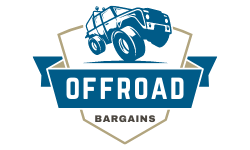
The North Face Summit Series Breithorn Down Jacket Review

Bottom Line
The North Face Summit Series Breithorn Down Hoodie (men’s / women’s) is a great option for those colder days when you need something warm but not too heavy. The 800-fill power down insulation keeps us warm throughout the tail end of winter and into the early spring days in the Colorado mountains. It’s not the lightest or most technical jacket out there, but it’s definitely comfy and durable enough for regular wear.
The fit is cozy and athletic, offering just the right amount of mobility while still locking in warmth. While it’s not the least expensive jacket we tested, it still offers solid value for its performance and comfort. If you’re looking for a reliable mid-weight jacket for colder weather, the Breithorn Down Hoodie definitely delivers.
Like the look of the Breithorn but want to read about more excellent options? Be sure to check out our in-depth down jacket gear guide here.
How We Tested
We tested the North Face Breithorn Down Hoodie over two months in late winter and early spring, putting it through its paces across the mountains of Colorado and Utah. We also brought it along to Florida’s Gulf Coast—where, unexpectedly, it came in handy during a surprise cold snap with temps in the 30s.
Quick Specs

The North Face Summit Series Breithorn Down Hoodie
Best All-Day Comfort Down Jacket
CleverHiker Rating:
4.8/5.0
Price:
$430
Weight:
14.7 oz. / 13.4 oz.(men’s / women’s)
Fill Power:
800
Fill Weight:
n/a
Pros
- Warm
- Comfortable
- Helmet compatible hood is easily adjusted
- Nice cuff design
- Large internal drop pockets
- Offers great range of motion
Cons
- On the heavy side
- Not as packable as others
- Price
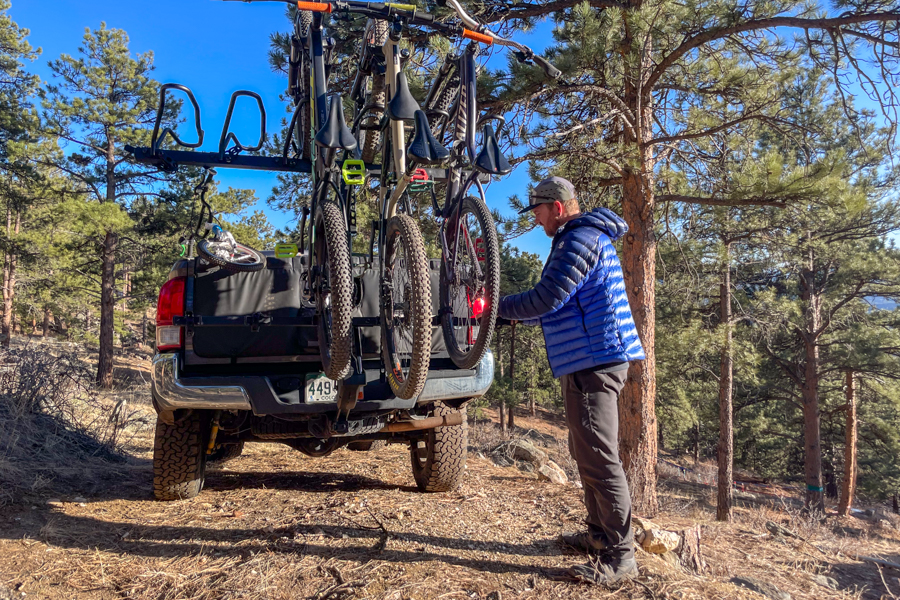
Comfort
The Breithorn stands out as one of the most comfortable jackets we tested, consistently ranking above average. Several factors contribute to its comfort, starting with the overall cozy feel. The materials are soft against the skin, and the 800-fill down insulation hugs your body, providing warmth and a pleasant, cushioned feeling.
The cuffs, often overlooked in other jackets, are one of our favorite features. The soft, stretch-knit fabric is both flexible and snug, offering just the right amount of compression to trap warmth and block out cold winds. They’re also designed to wick moisture and dry quickly if they get wet, adding to the jacket’s overall comfort. We especially appreciated the cuffs when bouldering outside of Morrison, Colorado. The cuffs stayed out of the way but still kept the sleeves from riding up.
The fit is athletic, which we appreciate, though it might not work for everyone. The upper body and shoulders offer ample room for mobility, and the sleeves are slightly longer, making it a great option for climbing or activities that require a wide range of motion. However, the jacket is tighter around the torso and stomach, which gives it a more fitted feel compared to other jackets we’ve tested. While this offers a sleek look, it can make layering a bit trickier, depending on your body shape. We also love how the hood fits with or without a helmet, adding extra comfort for outdoor activities.

Warmth
Once again, the Breithorn earned high marks for warmth. In fact, at times, we found it to be almost too warm for a mid-weight jacket. The 800-fill power down and semi-wide baffles do a great job of trapping heat, while the trim athletic fit helps keep that warmth inside.
One thing we’d love to know is the fill weight (how much down is actually used in the jacket). While fill power is a more commonly discussed metric, we think fill weight is arguably more important when it comes to real-world performance. Unfortunately, customer service was unable to provide a precise figure for fill weight.
Regardless of the exact fill weight, it’s clear there’s a lot of down in this jacket. You can feel it in the warmth, the loft, and just how cozy the jacket is. The longer length also adds to the warmth, as it covers more of your body and keeps you insulated. Plus, the cinchable hem and adjustable hood help trap warmth while keeping cold air out.
While we really appreciate the warmth on colder days, it can be a bit much when the temperatures rise or if you’re getting your heart rate up. This is definitely a jacket we’ll keep in our rotation for the colder months.
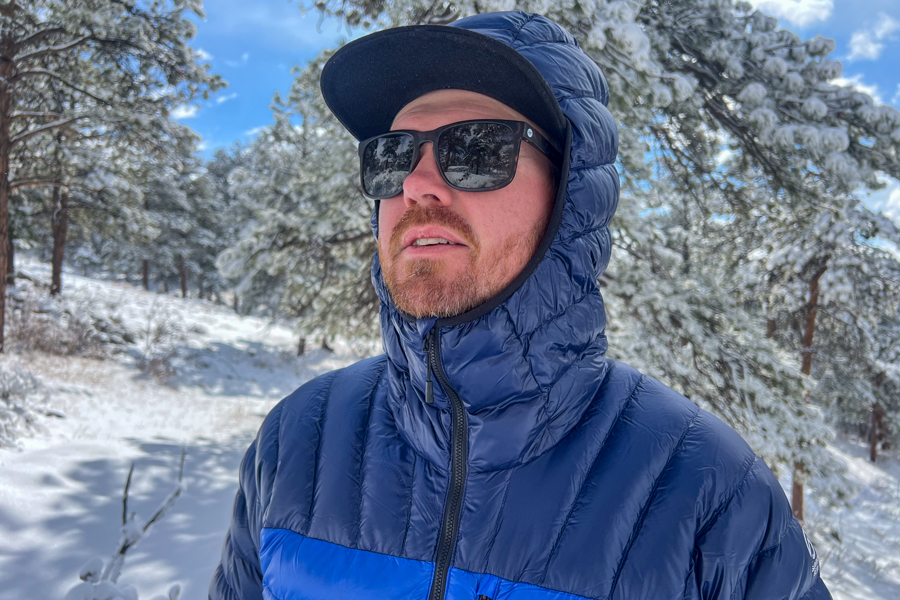
Weight & Packability
All that warmth and comfort come at a cost—literally and figuratively. While the price is high, the real trade-off is weight and packability. While this jacket isn’t overly heavy, it does sit on the higher end of the spectrum compared to other down jackets in its category.
The size large we tested weighs 1 lb 0.6 oz on our scale, which is notably heavier than the advertised weight of 14.7 ounces. We didn’t feel the weight while wearing it—it feels as light as any jacket. However, the bulk becomes apparent when you try to stuff it into its own pocket for travel. It takes up considerably more space than other jackets near the top of our list. If lightweight and compactness are top priorities for you, you might want to explore other options.

Weather Resistance
If weather resistance is your top priority, you might want to look into some of our favorite jackets with synthetic insulation. However, the Breithorn performs better than most down jackets in this category. Like many high-end down jackets, it uses hydrophobic down, which handles moisture better than traditional untreated down.
That said, it’s important to note that while it can handle light rain and snow for a while, it will eventually wet out. The shell is treated with a DWR layer to help repel light moisture, adding to its weather resistance.
We primarily tested the Breithorn in early spring, which allowed us to experience it during wet snowstorms and light spring drizzle. Under these conditions, the Breithorn outperformed the average down jacket. The thicker baffles and high-quality stitching help retain warmth and provide wind resistance.
During testing in Colorado’s early spring, we were impressed with its ability to block strong winds, which are common this time of year. The design of the hood, hem, and cuffs also adds to its ability to block the wind and keep warmth in. Overall, we found the Breithorn to be better than most in the weather resistance category.
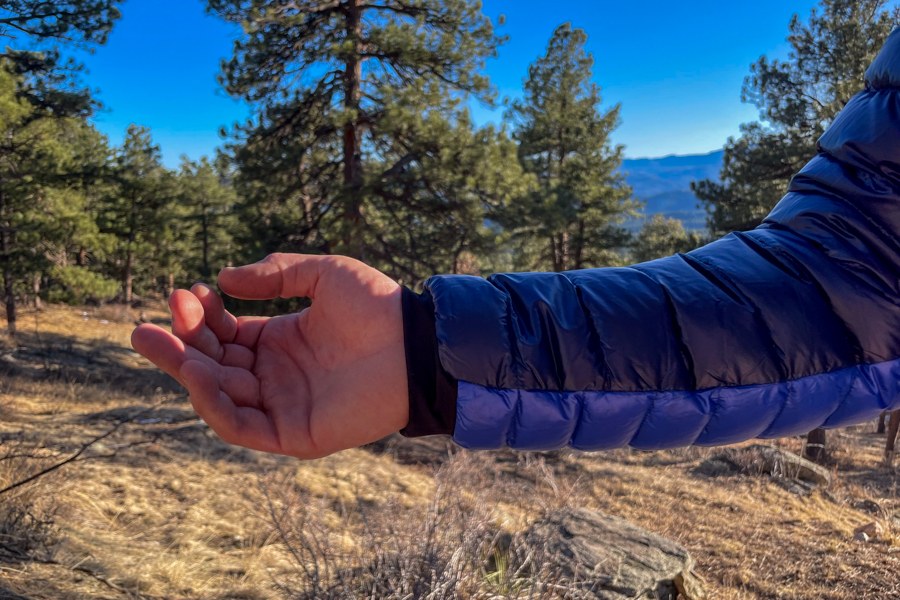
Breathability
Breathability is one area where the Breithorn Down Hoodie is a bit of a mixed bag. While it’s certainly warm and weather-resistant, it’s not the most breathable jacket we’ve tested, especially when you’re working hard or the temperature starts to climb.
The hydrophobic down does a decent job of managing moisture, but when you’re sweating during intense activity, the jacket can feel a bit clammy inside. We definitely ended up feeling stuffy while hiking in this jacket. This is common for down jackets, particularly those meant for being stationary or colder conditions.
Like most other down jackets, you won’t find any features that are specifically designed to dump heat like pit-zips. The jacket’s longer cut also means you’ll get some added warmth around the waist, which is great for keeping the chill off but can make things feel a bit warmer than expected during those milder spring days.
While the Breithorn is solid for cool to cold conditions and provides great warmth, it’s not the best option for breathability, especially if you plan on moving quickly or in warmer temperatures. It’s best suited for lower-intensity activities or as a mid-layer for colder weather.
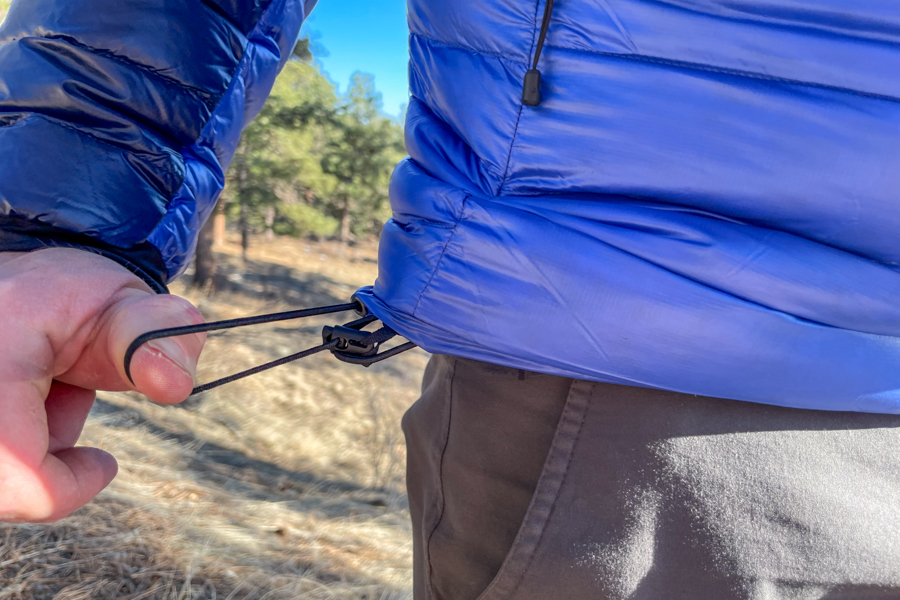
Should You Buy the North Face Summit Series Breithorn Down Hoodie?
The North Face Summit Series Breithorn Down Hoodie is a great choice for those who need reliable warmth in cold, shoulder-season conditions, especially for activities like winter hiking, climbing, or camping.
Its excellent warmth, comfortable fit, and weather-resistant features make it a solid option for colder months, though like most down puffers, it’s not the best for high-output activities or warmer conditions.
While it’s not the lightest or most packable option on the market, the Breithorn offers good value for users who prioritize warmth, comfort, and weather resistance in demanding conditions. It’s best suited for those who engage in lower-intensity activities in cold environments or need a durable, reliable jacket for layering. However, if you’re looking for a lighter, more breathable option for warmer activities, you might want to consider other options.
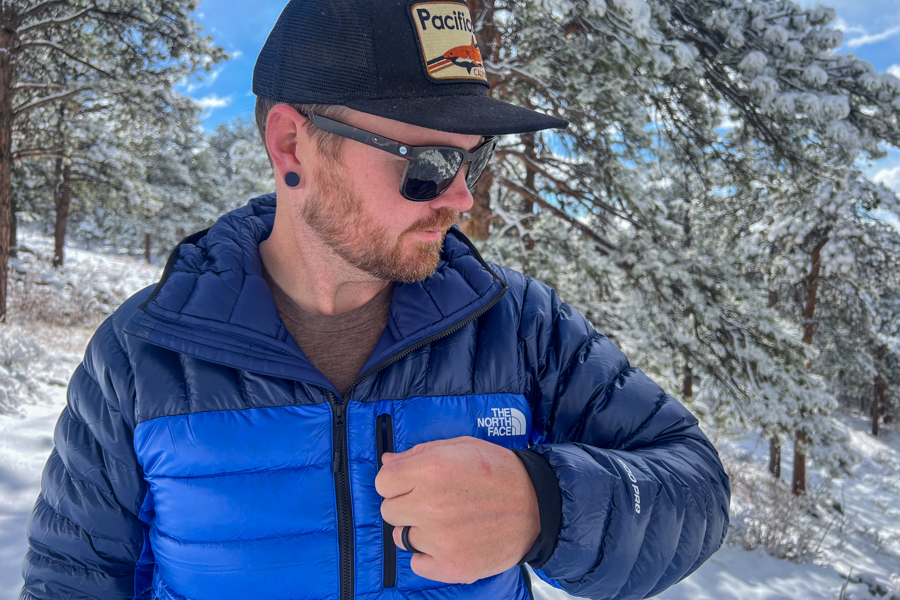
What Other Down Jackets Should You Consider?
If you’re in the market for a down jacket but want to explore other options, you’re in luck! Below, we’ve highlighted a few alternatives to the Microlight Alpine, each offering unique features and benefits. Don’t forget to check out our comprehensive gear guide to down jackets for an in-depth look at the top picks!
Patagonia Down Sweater Hoody Review: This lightweight and packable option is perfect for those who prioritize portability without sacrificing warmth. The Down Sweater is an excellent mid-layer, providing a comfy fit and solid performance in cold but not extreme conditions. If you’re after a simpler, more versatile down jacket, the Patagonia Down Sweater is a great choice.
Arc’teryx Cerium Hoody Review: Known for its premium build and high-performance design, the Cerium Hoody offers an exceptional warmth-to-weight ratio and a more technical fit. Ideal for active users looking for a high-output jacket that offers warmth without unnecessary bulk, it’s a solid contender for outdoor activities in cold conditions.
Black Diamond Approach Down Hoody Review: If you’re after a slightly more affordable alternative to the Breithorn with similar comfort and features, the Black Diamond Approach Down Hoody fits the bill. It’s a great option for those who want solid insulation and durability but want something a little lighter and more packable.

The post The North Face Summit Series Breithorn Down Jacket Review appeared first on CleverHiker.
